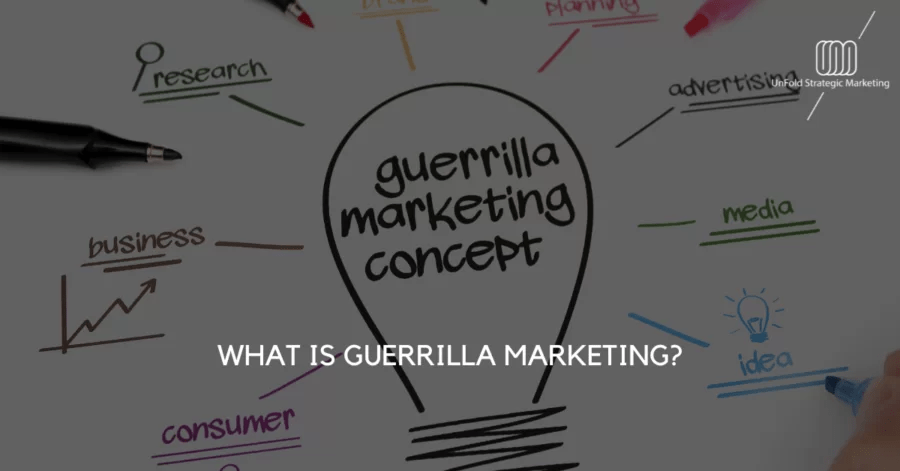Guerrilla marketing is a marketing tactic in which companies use unconventional interactions to promote a product or a service. It is different from traditional marketing because it relies more on personal interaction and has a smaller budget. It also targets small groups of promoters responsible for publicity in a particular location rather than resorting to widespread paid media campaigns.
In other words, guerrilla marketing acts as a magnifying glass for the impact of a marketing campaign. Guerrilla marketing actions characterise activities in public places. These strategies extend to digital marketing and have taken an important place on social media networks. Moreover, the emotional appeal of guerrilla marketing is practical, making a deep imprint on the consumer’s mind.
However, there are dangers associated with guerrilla marketing-
- There can be legal repercussions that the companies can face because of their actions.
- Potential misunderstanding of activities can have catastrophic consequences for the brand.
Different types of Guerrilla Marketing-
Viral marketing:
It is characterised by word of mouth made online, primarily through social media networks, and allowing the brands to make a buzz.
Stealth marketing:
It is characterised by discretion. Prospects, consumers, and passers-by are unconsciously a part of guerrilla marketing campaigns.
Ambient marketing:
It uses the product, brand, and service environment as a marketing medium.
Ambush marketing:
It takes advantage of the notoriety of a third party or a brand to promote its products and services. These campaigns are primarily a result of partnerships that are derivative use of another brand for its benefits.
Street marketing:
These play with elements present in public spaces, passers-by, etc.
Guerrilla projections:
Visual projections are being used to grab the attention of passers-by and motorists.
Experiential marketing:
It is also known as engagement marketing. The strategies engage consumers in the marketing campaigns. They help in spreading brand awareness and creating a connection with the consumers. They are often event-centric.
Advantages of Guerrilla Marketing
- Cost-efficient- The execution of guerrilla marketing strategies is inexpensive, requiring significantly less investment.
- Grows with word of mouth- Guerilla marketing strategies mainly depend on word of mouth, considered one of the most potent arsenals any marketer can have.
- Interaction with the audience- The strategies help the brands connect with the consumers more personally.
- Publicity can snowball- The strategies help the brands to increase their reach in the long run and target a larger audience. In addition, they help create awareness and buzz about the product in the market.
- Impact creation- Since the strategies are innovative, they create a long-lasting impression on people’s minds.
Disadvantages of Guerrilla Marketing
- Strategic risks– Guerrilla tactics might have the chance of being misperceived since the perception of creativity lies in the eyes of the beholder. Customers can skew against the brand in case of a lack of clarity and openness. There can also be cases where word of mouth backlashes and things go beyond control, detrimental to the brand.
- Potential backlash– There can be a situation where the audience might disapprove of their marketing strategy, and the brands will have to face their wrath. The strategies should be such that it boomerangs the brand’s images so that even if the campaign turns unsuccessful, the consequences should not be burdensome.
- Uncertainty– Brands cannot be sure if a strategy can positively impact. Most of these strategies come with an air of mystery around them. Brands will have to take the chance and see if it works out.
- Unforeseen obstacles– Bad weather or inappropriate timing may affect marketing campaigns.
- Legal risks– Brands should frame the strategies by keeping in mind the legal procedures and then carry out their product placements and decide on locations to carry out their campaigns.
How to launch a Guerrilla Marketing campaign
- Choose the right location- This plays a significant role in determining its impact on people.
- Make use of visuals- Visuals are processed faster than text. As a result, consumers relate more to visual content, graphics, images, and abstracts.
- Maintain some secrecy- When a message is left open for interpretation, it creates an air of mystery and makes people come back for more.
- Offer more than others- Find unique ways to stand apart from the crowd. It helps to capture people’s attention. Come up with innovative ideas like giving out coupons and gift cards.
- Be Responsive and Spontaneous- A brand needs to keep up with the changing trends to keep pace with the competitors. Apart from that, brands should respond to customer queries.
- Keep in mind the target audience- To optimise the marketing strategies, the brands should know their target audience well. In addition, the potential to expand the customer base should also be kept in mind.

